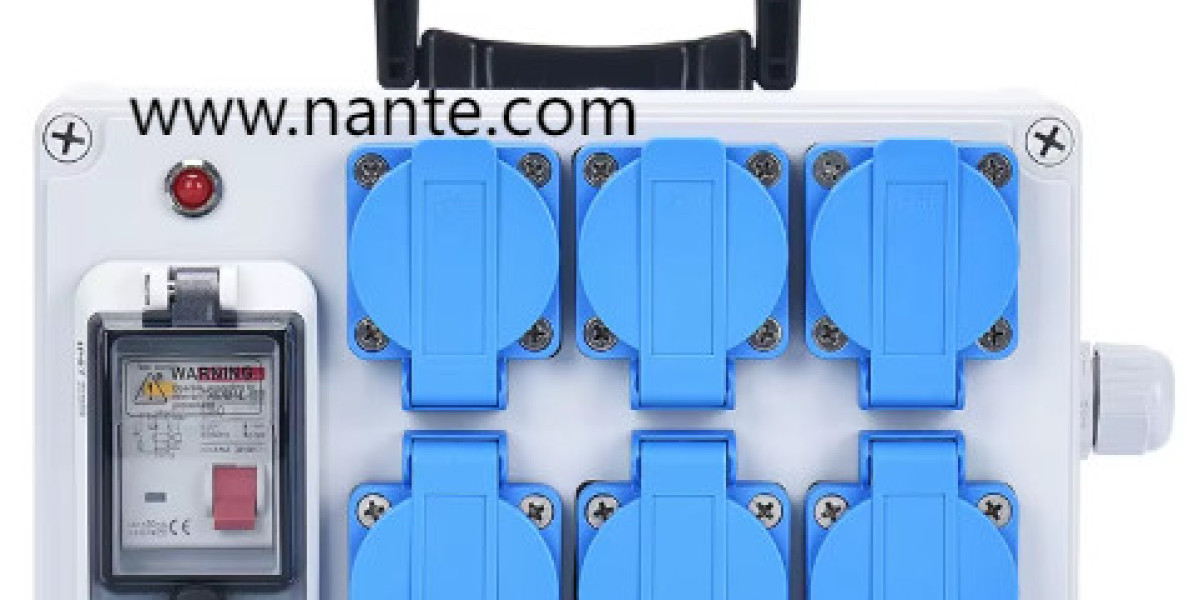Keeping electrical systems cool is no longer optional for modern sites facing heavier loads and warmer outdoor conditions. A distribution Socket Box placed in a service area can accumulate heat from internal components and external sunshine, and without proper measures that rise in temperature may shorten component life or trigger protective trips. Understanding causes and remedies helps technicians and planners maintain reliable power delivery while meeting evolving operational demands.
Heat generation often starts with load mismatches. When multiple devices draw current through the same outlet group, terminals and bus bars carry elevated stress. Another frequent factor is poor contact quality. Vibration and time can loosen screws or cause oxidation on metal surfaces, creating resistance that converts electrical energy into unwanted warmth. Nearby equipment that radiates heat also raises internal temperatures, especially when boxes sit in direct sunlight or inside compact enclosures with little airflow.
Material selection affects thermal behavior. Metal housings conduct heat away from hot spots and provide a path for dissipation, while polymer shells tend to trap warmth without conductive backing. However polymer units may resist corrosion and reflect sunlight if formulated with suitable additives. Designers often blend approaches by adding internal aluminum plates to polymer cases, combining corrosion resistance with improved thermal paths.
Passive cooling strategies are a reliable first step. Providing clearance around the enclosure and avoiding installation against heat producing surfaces lets natural convection move warm air away. Internal partitioning keeps high current feeds separated from control circuits, reducing localized heating. Including vent channels and raised mounting feet helps maintain air movement even in sheltered positions.
Active measures offer more control where passive steps do not suffice. Small fans mounted in weatherproof housings can move air through the case, and thermostatic control ensures fans run only when needed. For installations where dust or moisture presents a hazard, filtered vents or blowers with positive pressure protect internals while exchanging air. Heat sinks attached to heavy gauge bus bars and thermal pads that draw warmth from connectors into larger metal surfaces also lower internal temperatures effectively.
Electrical practice plays a role too. Balancing loads across multiple circuits spreads current and avoids single branch overload. Using larger gauge conductors reduces resistive loss and therefore heat generation. Properly torqued terminals and corrosion resistant clamps minimize contact resistance and lower the chance of hotspots forming during operation.
Monitoring and predictive maintenance now factor heavily into prevention strategies. Temperature sensors placed at strategic points feed data to building systems and trigger alerts before conditions become critical. Infrared surveys performed during routine checks help technicians find hidden hot spots and address them with targeted fixes. Some modern enclosures accept plug in monitoring modules so teams can add temperature readouts without major rewiring.
Material coatings and surface treatments also contribute. Reflective finishes on exposed enclosures reduce solar gain, and thermal barrier paints on internal panels help separate heat sources. Where corrosion is an issue, stainless fasteners and plated terminals retain low resistance longer, supporting cooler operation over time.
Designing for future loads prevents overheating due to incremental additions. Leave spare volume inside the case for additional wiring and protection modules. Choose bus bars and breaker slots rated for expected increases so that adding a circuit does not create a thermal problem. When renewable sources or battery systems feed an enclosure, plan for transitional states such as inrush currents that can briefly raise temperatures.
Field friendly features accelerate upkeep. Captive screws and quick release panels let crews open a case and replace seals or fans quickly. Modular terminal strips simplify swapping worn parts without disturbing adjacent connections. Keeping spare gaskets and a small fan kit on hand reduces downtime when a cooling element fails under heavy use.
As communities and facilities plan for hotter ambient conditions and denser electrical demands, preventing overheating in distribution Socket Box assemblies becomes central to reliability. Choosing materials wisely combining passive and active cooling and adopting monitoring and maintenance routines preserves equipment and keeps systems available when they are needed most. For a range of configurable enclosures and accessory options that support thermal management and operational flexibility, explore the product selection and technical guidance at www.nante.com. The site provides configuration details, accessory lists and installation tips to help you select the right enclosure and cooling approach for each site need.













